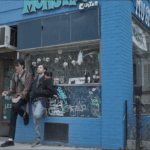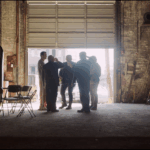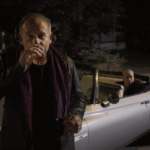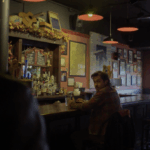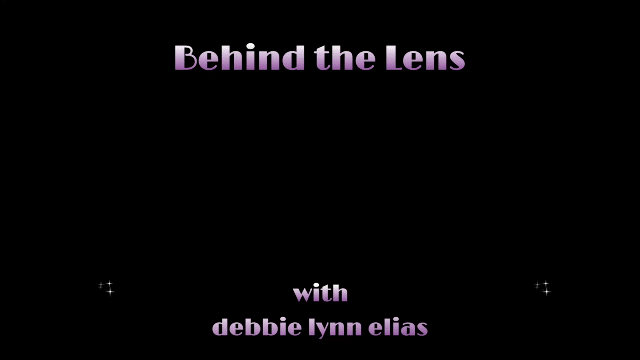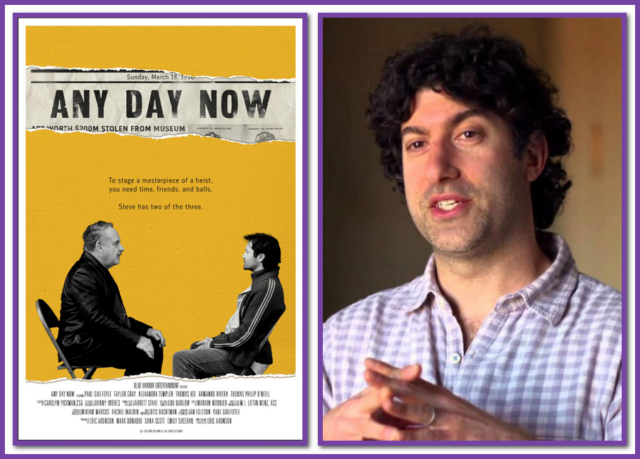
In this exclusive interview writer/director ERIC ARONSON dives into the making of ANY DAY NOW, his first directorial feature.
SYNOPSIS: Steve (Taylor Gray) is a night watchman in his early 20s but his life is already getting away from him: his band is falling apart, he owes a ton of money, and he’s in love with his best friend’s girl. When Marty Lyons (Paul Guilfoyle) comes along and ropes Steve into a world of misfits, oddballs, and lost souls as dirty as the Charles River, Steve wonders if this is a change for the better or if he’s about to make the worst mistake of his life.
Written and Directed by ERIC ARONSON, ANY DAY NOW stars Paul Guilfoyle, Taylor Gray, Alexandra Templer, Thomas Kee, and Armando Rivera, ANY DAY NOW is based on a true-ish art heist of Boston’s Isabella Stewart Gardner Museum on March 18th 1990, and the thieves who walked away with hundreds of millions of dollars’ worth of art – the single largest unsolved property theft in the world.
In the early morning hours of March 18, 1990, 13 works of art were stolen from the Isabella Stewart Gardner Museum in Boston. Two men posing as policemen responded to a disturbance call at the museum and were admitted to the premises by security guards who were on duty at the time. Over the next 81 minutes (the runtime of this film), the thieves bound the guards and stole 13 priceless works of art by renowned artists such as Vermeer, Manet, Rembrandt, and Degas, among others. The theft remains unsolved and the Museum’s commitment to resolving the crime has never diminished since its occurrence. The Museum, the FBI, and the US Attorney’s office are still seeking viable leads that could result in the safe return of the art. The Museum is offering a $10 million dollar reward for information leading directly to the safe return of the stolen works. A separate reward of $100,000 is being offered for the return of the Napoleonic eagle finial.
In this exclusive interview, first-time feature director ERIC ARONSON discusses ANY DAY NOW, a creative take on the 1990 Gardner Museum heist. Important to Eric in making this film was capturing the authentic Boston spirit, using local talent and real locations, and getting Bostonian Paul Guilfoyle in a lead role as “Marty.” As you can hear Paul himself talk about in my exclusive interview with him, he is intimately familiar not only with Boston but with the Gardner Museum where, as a schoolboy, he would go to and sit and do his Latin homework. Guilfoyle’s personal connection to the Museum is one of the main elements that allows Arsonson to achieve his vision for ANY DAY NOW.
Collaborating with cinematographer M.I. “Miguel” Litten-Menz and editor Marion Monnier, both known for their visual storytelling processes, Eric also brought in composer Lou Barlow and music supervisor Karyn Rachtman to curate the music scene of 1990’s Boston.
As Eric breaks down the elements of making ANY DAY NOW, you’ll hear him discuss the development of the script where he focuses on the characters and the unique atmosphere of Boston, rather than solely on the facts of the Gardner Museum heist. Inspired by François Truffaut’s approach in “Shoot the Piano Player,” where Truffaut used a crime genre as a background while emphasizing character development, Eric wanted to explore the interesting characters surrounding the heist, showcasing the humor, wisdom, and depth of Boston’s local personalities. His goal was to create a story that goes beyond the typical crime narrative, using the theft as a backdrop to explore the rich human elements of the situation.
Making Boston a character was extremely important to Eric. He wanted to show the authentic Boston that locals know, not the typical tourist or Hollywood portrayal of the city. He specifically sought locations that still looked like 1990 and aimed to capture the city’s unique grit, humor, and wisdom. Frustrated with how outsiders typically depict Boston – with drone shots of Fenway Park and people in Red Sox hats – he wanted to showcase the real neighborhoods and people he drives by every day.
The film’s visual grammar was achieved by a collaboration of creativity by Eric and cinematographer Miquel Litten-Menz, and intentional choices. Mapping out their camera approach in advance, discussing how the camera would express scenes and characters, they purposely avoided mid-shots typical of TV, preferring far away shots and mixing up perspectives. They would challenge themselves daily, sometimes deciding to shoot in the style of French New Wave cinema or the Coen Brothers, experimenting with wider angles and unique framing. Eric emphasized that they wanted to solve visual problems creatively rather than with money, “cutting in the camera and planning shots meticulously.” Their goal was to tell the story visually, with Eric noting he often watches movies without sound to ensure the visual narrative is clear. Miguel’s visual communication style – showing rather than explaining – was key to their collaborative approach, and Eric was so impressed that he wants to work with him on all future films.
Another element of the film that we spend a good part of our conversation discussing is Eric’s desire to capture the musical essence of 1990s Boston, focusing on the “loud, soft, loud” movement that influenced bands like The Pixies and ultimately the grunge scene. He specifically sought out Karyn Rachtman, known for iconic soundtracks like Pulp Fiction and Boogie Nights, to help curate the music. Lou Barlow, from bands like Dinosaur Junior and Sebadoh, was brought on as the composer. They incorporated Barlow’s music from his different bands and carefully built the musical landscape, intentionally introducing music sparingly in the first half of the film and gradually increasing its presence. The goal was to create a soundtrack that authentically represented the Boston music scene of that era and complemented the film’s narrative.
As Eric reflects on post-production, he describes the editing process as a “unique journey”. Inspired by Olivier Assayas’ films and editor Monnier’s previous work, particularly her editing on films like Personal Shopper and Clouds of Sils Maria, Eric was determined to bring Marion on board as the editor for ANY DAY NOW. Particularly impressive to Eric is Marion’s unconventional editing style, noting she would cut in unexpected places – even in the middle of a pan shot – without viewers noticing. He appreciated her “light touch” and ability to create humor without being silly. They collaborated closely, with Eric going to Paris to finish the editing. The process was about finding the right rhythm and fluidity, with Eric emphasizing that Marion could tell the story visually while maintaining a gentle approach.
One of the most interesting aspects of this conversation with Eric is his lessons learned as a first-time filmmaker, not the least of which is gaining confidence in his own voice and learning to make a film that truly feels like an authentic representation of his vision.
And how about showcasing each of the stolen artworks? Just how did Eric pull that off? You’ll have to listen to the interview to find out!
An interesting interview with an interesting and passionate new director,
TAKE A LISTEN. . .
by debbie elias, exclusive interview 03/13/2025

